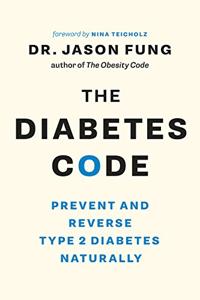
Want to learn the ideas in The Diabetes Code better than ever? Read the world’s #1 book summary of The Diabetes Code by Dr. Jason Fung here.
Read a brief 1-Page Summary or watch video summaries curated by our expert team. Note: this book guide is not affiliated with or endorsed by the publisher or author, and we always encourage you to purchase and read the full book.
Video Summaries of The Diabetes Code
We’ve scoured the Internet for the very best videos on The Diabetes Code, from high-quality videos summaries to interviews or commentary by Dr. Jason Fung.
1-Page Summary of The Diabetes Code
Overview
Intermittent fasting is a great way to lower your insulin levels, but it takes some experimentation. You should consult with a medical expert and find a regimen that works for you. Some people prefer longer fasts less frequently, while others like more frequent shorter fasts. The key is experimenting until you find something that works best for you!
Type 2 diabetes is a modern epidemic. It’s affecting over 400 million people worldwide, with 28 million of them in the US alone. The cause? Carb- and sugar-heavy diets and sedentary lifestyles that our bodies can’t keep up with. That leads to insulin resistance and all sorts of health issues.
Type 1 diabetes is treated differently from type 2 diabetes. The standard treatment, insulin shots, actually increase the risk of cardiovascular diseases and strokes in people with type 2 diabetes.
But there’s a solution. A combination of changes in diet and fasting can help type 2 diabetes patients get healthy without having to undergo expensive and invasive surgeries.
The following points will help you understand why drugs might not be the solution for type 2 diabetes, as well as how to prevent and reverse it.
Big Idea #1: Diabetes is a disease that affects your body’s ability to process food. It can be caused by genetics, diet, and lifestyle choices.
Diabetes is on the rise, and type 2 diabetes in particular. The figures are alarming: one hospital recently reported that it was treating ten times as many cases of diabetes than it had been in 1990, and most new cases were type 2. Diabetes is a disorder related to high blood sugar levels; there are four types of the disorder, including gestational diabetes caused by high blood sugar during pregnancy. Other types include genetic problems with the pancreas or other organs.
Diabetes is a disease that affects the body’s ability to process sugar. There are two main kinds of diabetes: type 1 and type 2. Type 1 diabetes happens when the pancreas doesn’t produce enough insulin, while type 2 diabetes occurs when cells become resistant to insulin. In both cases, blood sugar levels rise above normal levels, which can cause various symptoms like increased thirst or frequent urination.
Type 1 diabetes is an autoimmune disease in which the body’s immune system attacks insulin-producing cells. Insulin is a hormone responsible for regulating blood sugar levels, so people with type 1 diabetes need to take insulin shots to live safely.
Type 2 diabetes is different from type 1. It’s typically the result of a poor diet, so the body produces too much insulin to compensate for it. Eventually, cells become resistant to insulin because there’s just too much of it. Therefore, insulin shots aren’t well suited at treating type 2 diabetes since they’re designed for people who don’t produce enough insulin in their bodies.
Big Idea #2: Diabetes cannot be cured by simply cutting down on your food intake.
The way we describe the world changes all the time. We have to find new words for new things, like bromance – a term used to describe close friendships between two men.
A new term, diabesity, has emerged to describe a growing trend: the epidemic of people suffering from both obesity and type 2 diabetes.
A link between obesity and diabetes was proven by a Harvard professor in 1990. The professor’s name is Walter Willett.
He found that weight gain is the most significant factor in increasing the risk of type 2 diabetes. For example, gaining 44-77 pounds increases our chances of developing this disorder by 11,300 percent.
Researchers have shown that type 2 diabetes is closely related to weight gain and obesity. Studies from 1995 showed that even small amounts of weight gain dramatically increased the chance of developing diabetes. Today, there’s no doubt about this connection, since researchers can see it in many cases. Furthermore, people who are overweight or obese have a much higher risk for developing type 2 diabetes than those with normal weights do.






